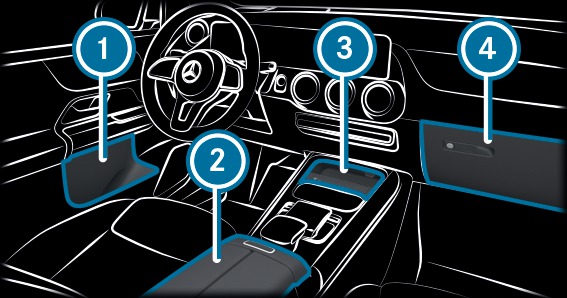The vehicle centre of gravity and the usual driving characteristics as well as the steering and braking characteristics alter.
If you exceed the maximum roof load, the driving characteristics, as well as steering and braking, will be greatly impaired.
You will find information on the maximum roof load in the "Technical data" section in the printed Owner's Manual.
The panorama sliding sunroof may be damaged by the roof luggage rack if you attempt to open it when using a roof luggage rack not tested and approved for Mercedes-Benz.
The panorama sliding sunroof may be raised to allow ventilation of the vehicle interior.
When you adjust a seat, you may trap yourself or a vehicle occupant.
The seat does not engage when folded forwards. The seat can fold backwards unexpectedly, e.g. when accelerating, braking or in the event of an abrupt change of direction or an accident.
People in the seat's sweep can become trapped.
Always ensure that all vehicle occupants have their seat belts fastened correctly and are sitting properly. Particular attention must be paid to children.
If you no longer require the folded-down seat backrest as a loading area, fold the backrest back into place.
The area into which the seat is folded is clear.
The area under the rear bench seat is clear.
The armrest on the second row of seats is folded back and the cup holders are empty.
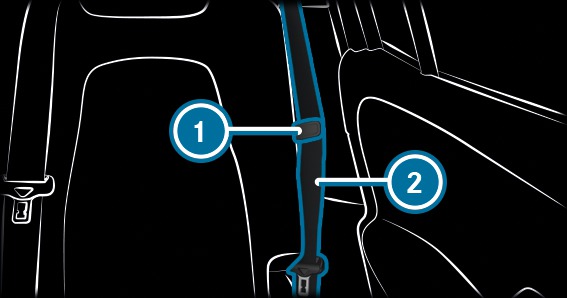
 in seat belt strap holder
in seat belt strap holder  .
. When the left-hand seat backrest is folded forwards, the centre seat backrest will also be folded forwards.
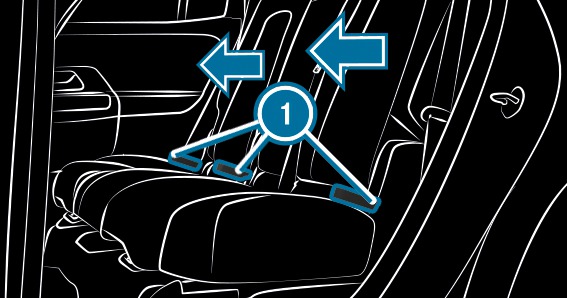
 .
. The seat backrest will automatically fold forwards.
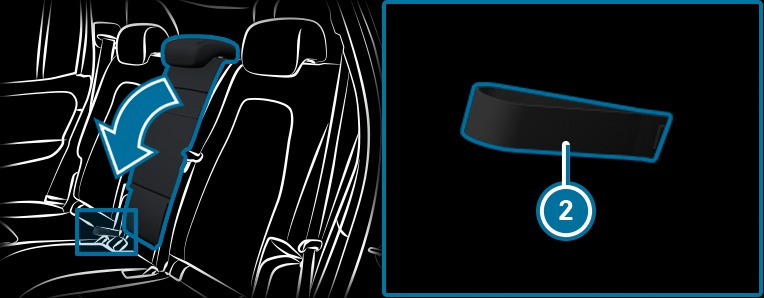
 .
. The seat backrest will automatically fold forwards.
When the seat backrests on the second and third rows of seats are folded forwards, you can push the rear bench seat on the second row of seats back. This will then provide a continuous load compartment surface. Ensure that the area between the rows of seats is clear.
When you adjust a seat, you may trap yourself or a vehicle occupant.
The rear bench seat, rear seat and seat backrest may fold forwards, even while the vehicle is in motion.
As a result, the vehicle occupant will be pressed into the seat belt with increased force. The seat belt will not be able to protect as intended and could cause additional injury.
Objects or loads in the boot or load compartment cannot be restrained by the seat backrest.
The seat belt could become trapped and thus be damaged when the seat backrest is folded back.
If the left and centre seat backrests have been folded forwards together, fold the left seat backrest back first.
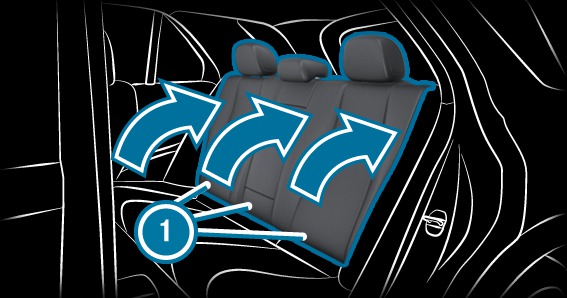
 back until it engages.
back until it engages. The seat backrest will remain in the cargo position.
If you drive with the load compartment floor open, objects could be flung around and hit vehicle occupants as a result. There is a risk of injury, particularly in the event of sudden braking or a sudden change in direction.
The audio amplifier and the area around the audio amplifier in the stowage space under the load compartment floor can get very hot.
If you touch these car parts, you may suffer burns.
Heat-sensitive objects, e.g. clothing or items of luggage, may be damaged if they come into contact with the audio amplifier.
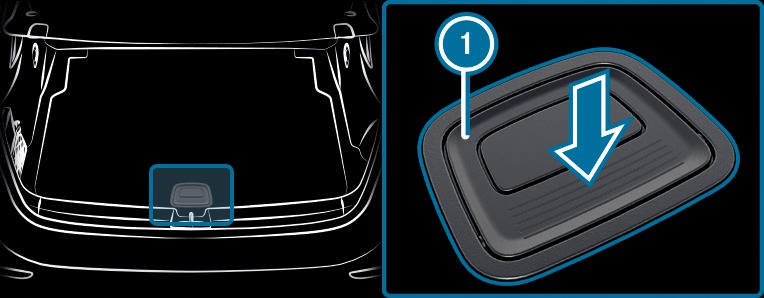
 upwards.
upwards.  .
.  down until it engages.
down until it engages. If the ball neck is not engaged, the trailer may come loose.
The ball neck may swing outwards when unlocking or when it has not been properly engaged.
There is a risk of injury within the ball neck's range of movement!
The vehicle is secured against rolling away.
The swivel range is clear.
The trailer cables or adapter plugs have been removed.
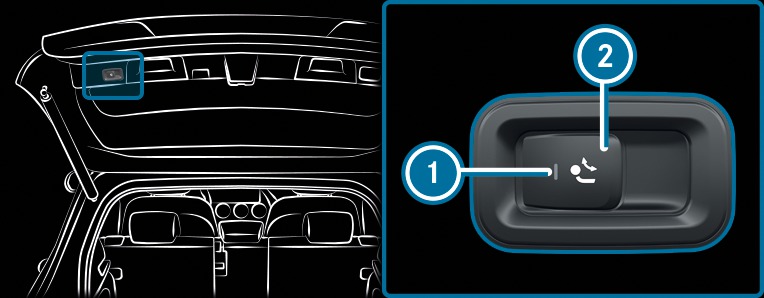
 until the ball neck unlocks.
until the ball neck unlocks. The ball neck will fold out from under the rear bumper.
Indicator lamp  will flash.
will flash.
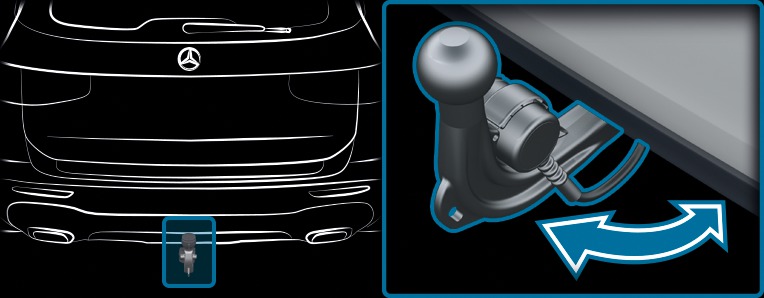
Indicator lamp  on the ball neck release switch will go out.
on the ball neck release switch will go out.
If the ball neck is not securely locked in place, the Trailer coupling Check lock message will appear on the multifunction display.
Make sure that the ball on the ball neck is clean. Check that it is either greased or dry (grease-free), depending on the instructions for the trailer.

 until the ball neck unlocks.
until the ball neck unlocks. The ball neck will fold up under the rear bumper.
Indicator lamp  will flash.
will flash.

Indicator lamp  will go out and the message on the multifunction display will disappear.
will go out and the message on the multifunction display will disappear.
Observe the notes on loading the vehicle More.
The release loops of the seat backrests in the rear may be damaged due to the attachment of objects.
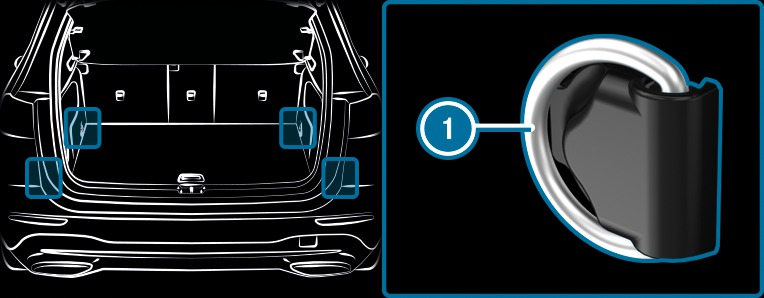

If objects in the vehicle interior are stowed incorrectly, they can slide or be thrown around and hit vehicle occupants. In addition, cup holders, open stowage spaces and mobile phone receptacles cannot always retain all objects within.
There is a risk of injury, particularly in the event of sudden braking or a sudden change in direction.
Observe the notes on loading the vehicle.
